First Lady of the Barossa Margaret Lehmann crowns our special Top 100 mixed dozen offer
Margaret Lehmann and her late husband Peter blazed a trail for winemakers in Australia. Here’s how her name came to adorn one of our most distinguished white wines - with an offer that includes the famous semillon
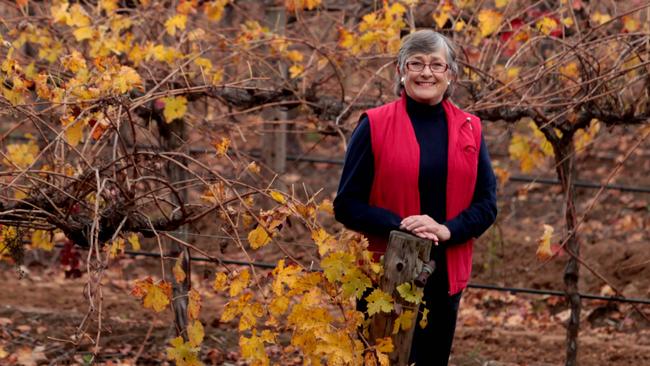
Her name adorns one of Australia’s most distinguished white wines. She’s the Margaret in the Peter Lehmann Margaret Semillon, a wine as quintessentially Barossan as the woman celebrated on the label. Those who have met Margaret Lehmann don’t tend to forget her way. Definitive, yes. Dependable, always. Direct, searingly so.
“It’s not about revenue – you must know that,’’ she chided me, minutes into our first business meeting. “You can’t afford to forget the old saying: ‘Revenue is vanity, profit is sanity, cash is king’.”
I’d just started running a liquor distribution business with my uncle in Queensland and may have been getting carried away extolling its revenue potential to Margaret and her husband, the one and only Peter Lehmann. In one moment, with just a few words, a lesson was rammed home with such precision that its imprint remains embedded in my mind 15 years later.
Peter, in his last years then, quietly stood by, smiling knowingly as Margaret, a former school teacher, administered her reality check to the new chum, drawing on her many decades of scrabbling in the wine game.
So how did the bookish daughter of an Adelaide Teachers College principal become one of the most productive advocates for arguably our greatest wine region, moving and shaking and shaping its future through years of tumult?
The story begins with a love affair. It was 1968. Margaret, then 25, was working as a librarian in the University of Adelaide’s law library and visiting the Barossa with a group of lecturers. The crew called into Saltram’s winery for a tasting, where Margaret bumped into its winemaker/general manager.
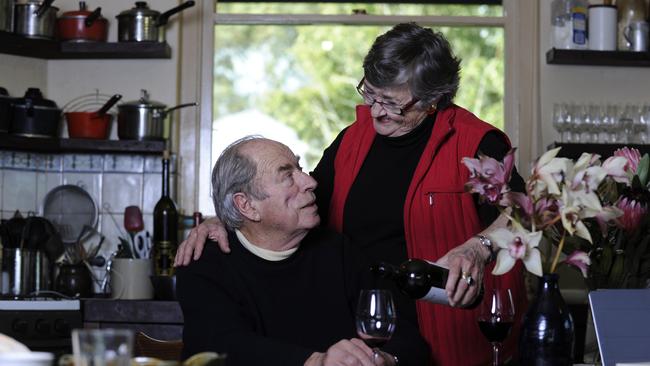
“Peter was 12 years older than me and he had a wicked sense of humour,’’ she says today from her home in the Barossa. “It was basically love at first sight – I say that it probably took four hours to fall in love, maybe six at the most.”
Margaret took up teaching English and History in the Barossa, and the pair married soon after; they lived next door to the winery and had two boys, David and Philip. “Peter always treated me as an equal, as a partner. While the values of the time were more like women would stay at home and cook dinner, he wasn’t like that. He was actually a good chef. I was very interested in wine and learnt to operate everything, including the crusher. Peter assumed I’d be there with him.”
These were the days when third and fourth-generation families like the Seppelts and Gramps still owned their business and connections with local grape-growers were tight. “The wine industry became very attractive to multinationals in the 1970s and ’80s and the Barossa was caught up in corporate takeovers. It became like tumbling dominos,” Margaret says.

With heightened investment came more grape plantings and, before long, a surplus. For Peter and Margaret, their moment of truth came in 1978 when the owners of Saltram, the pastoral company Dalgety, instructed Peter to stop buying grapes from the small, traditional growers and focus on making wine from the company’s own fruit.
“For Peter that was tough – he was always on the side of the growers,’’ Margaret says. To avoid the ruin of about 60 local families, the Lehmanns took the risk of setting up their own winemaking venture on the side, taking the grapes nobody wanted and, with a handshake, promising to pay the growers fair prices when the wines were sold.
Soon after, Saltram was sold to multinational Seagram and the new owners ordered Peter to stop his side venture. He quit and worked on securing backers for what was known as Masterson Barossa Vignerons, which soon became Peter Lehmann Wines.
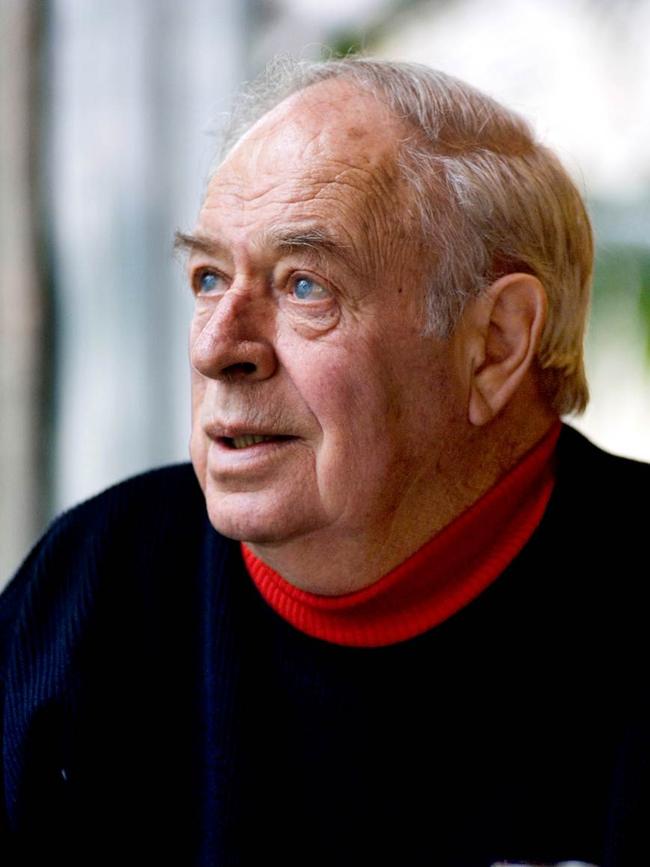
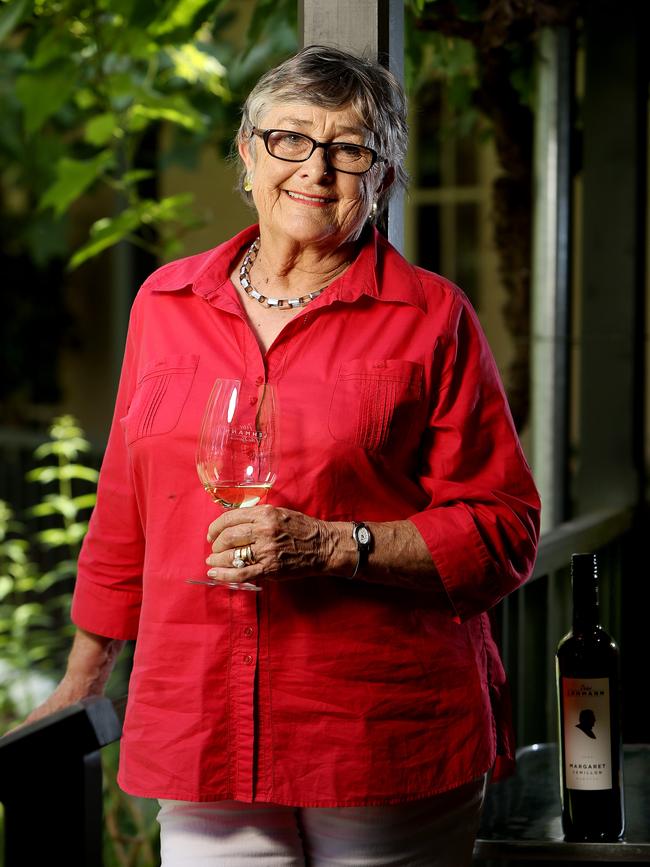
PL, as he was known, would conduct vintage operations each year from the new winery’s weighbridge, where growers, locals and visitors would meet for a “schluck” (a gulp of wine) and a “schnitter” (a sandwich). “I spent hours in the weighbridge up there, feeding those who came by,’’ Margaret once told The Barossa Magazine. “You’d hear the men arguing about what was the best recipe for dilled cucumbers … I loved all that back and forth.”
But times were tough. Exports of Australian wine struggled through the 1980s, rich Barossa reds were facing competition from cool-climate cabernet, and the wine surplus grew to the point where the government paid growers to pull out vines.
“It was incredibly stressful – Peter and I would come home from the weighbridge, sit down with a glass and plot. How would we make it all work? I was something like an assistant tactician in all these struggles,” Margaret says. “But we were lucky we never forgot how to laugh – when you’re laughing, it makes everything a bit better.”
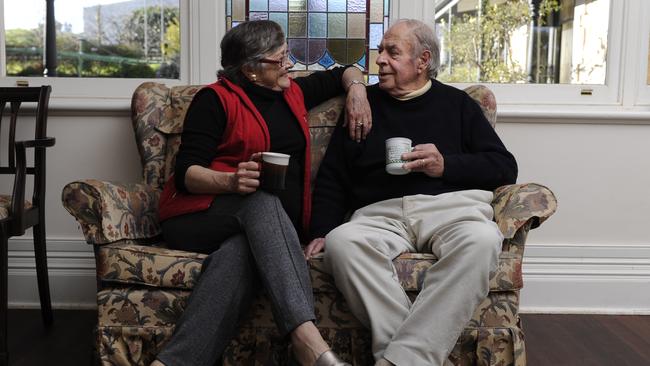
Through the 1990s and early 2000s, other Barossa families took the Lehmanns’ lead and set up their own wine businesses, creating a vibrant counter-culture to the corporate owners. The Barossa’s treasure trove of old vines, once shunned, were celebrated in small-batch, single-vineyard wines; more subtle wine styles emerged with careful use of oak; young guns gradually took over from legends like “PL”.
Margaret powered on, advocating for the Barossa’s past and future: running successfully for the Barossa council, convening vintage festival committees, presiding over the Barossa tourist association, chairing Food Barossa, serving on a national advisory council to the ABC and a federal taskforce on regional development; acting as deputy chair of the South Australian State Libraries Board ... the list goes on and on.
“Man, she got shit done – that stuff she did was way more tedious than I am built for,” says her son Phil, who like brother Dave has become a highly respected, independent winemaker, Phil with Max & Me, Dave with David Franz.
Looking back, Margaret says that her mission was not just to defend the Barossa’s treasures but “to put value in the word Barossa”.
THE WEEKEND AUSTRALIAN MAGAZINE: THE DRINKS ISSUE
Nick Ryan’s 20 best white wines of the year (over $30)
Nick Ryan’s 20 best red wines of the year (over $35)
Best value Australian white wines
Australia’s best value red wines revealed
Nick’s picks of the best sparkling - from home and abroad
That’s the spirit! The year’s best gins, rums, mezcals and more
Perhaps inevitably, Peter Lehmann Wines was caught up in its own hostile takeover battle in the early 2000s, with the Swiss-based Hess Group winning control over British drinks giant Allied Domecq in a deal worth more than $100 million. The Lehmanns held on to their 10 per cent stake, selling out to Australian operator Casella only in 2014, a year after Peter’s death aged 82.
“I still miss Peter to this day – I’ve never gotten over it,’’ says Margaret, who celebrated her 82nd birthday this month. “I wish he would come through the door.”
While she has slowed down just a little, her observations remain sharp. The wine industry is again struggling with an over-supply of fruit in the wake of China’s tariff hike on Australian wine exports during Covid.
“Here we are again, don’t we learn?’’ she says. “You can sell to China but you can’t make them buy. Stock apparently isn’t moving through the outlets there. It may be easier to sell rock lobsters than wine.”
It was with the 2003 vintage that Peter Lehmann Wines honoured Margaret with Margaret – a reserve-quality wine of fitting distinction to mark her achievements, as well as to elevate a style that bucked the trend of semillon winemaking in the Barossa.
Barossa winemakers traditionally matured semillon in oak, the common technique used in Bordeaux. But PL, much to his colleagues’ surprise, took a leaf out of the Hunter Valley’s playbook by presenting semillon in a fresher, lower-alcohol style, with grapes picked early and left to mature without oak.
The Margaret is released at five years of age, providing complex drinking with flavours that linger on and on.

The Australian Wine Club president James Halliday was judging the Sydney Royal Wine Show when the 2013 Margaret upset the Hunter classics by winning the trophy for Best Semillon. “I was one of the judges shocked at the outcome, but year in, year out the Margaret Semillon has been one of the most consistent gold medal performers in the aged vintage classes,’’ Halliday says. “Why others in the Barossa haven’t hopped onto the bandwagon is anyone’s guess.”
The 2017 release is well described by the Halliday Wine Companion’s Barossa specialist Dave Brookes as being “all lemon butter spread on freshly toasted brioche with hints of soft spice, marzipan, wildflowers, crushed stone and drying fields’’. It scored 96 points and was rated a red star for exceptional value.
But the last word of course must go to Margaret: “I’ve always loved a well made semillon. This is a wine that you don’t have to knock over when it’s young and fresh. Like many good things, it grows into its beauty as it ages.”
THE AUSTRALIAN WINE CLUB’S SPECIAL DOZEN
Two bottles of each wine below for $26 a bottle. SAVE $100
By Nick Ryan
2017 Peter Lehmann Margaret Semillon
Late last century, the biggest-selling white wine around $10-$15 carried the Lehmann name and was made from semillon. Thosedays are long gone, but the Lehmann legacy remains and is further enhanced with this wine. There’s fullness here, but no flab,with notes of lemon curd, cut straw and dry herb to the fore. A precise acidity indicates this wine (already seven years old) has a long future ahead.
$50; 11.4% alcohol; 95 points
2024 Penna Lane Watervale Riesling
There’s a real buzz building around the 2024 Clare riesling vintage, with judges at the region’s wine show in September declaringthe current vintage riesling class one of the best they’ve seen. This is the wine they chose as the best of the lot. It’spowerful and pure, humming with fresh citrus and bath salts, and destined for a long life in the cellar.
$35; 11% alcohol; 95 points
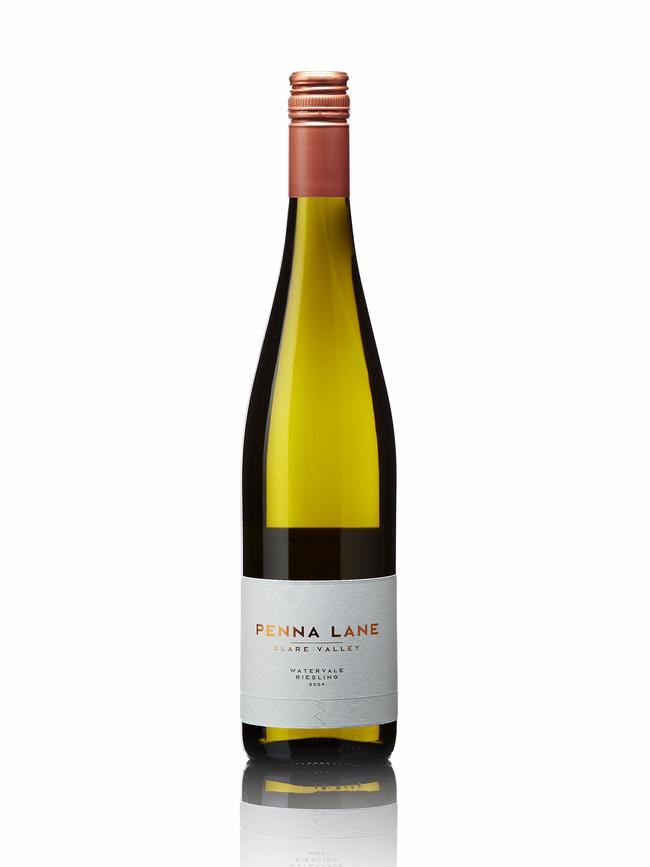
2023 Eight at The Gate SV Chardonnay
Jane Richards and Claire Davies, sisters with four kids each, one day decided free time was an easily discarded commodity,so they bought a big vineyard in Wrattonbully, South Australia, near where they grew up, and established a wine label whilethey were at it. It’s testament to their skill, hard work and manageable madness that they can produce wines as good as this. Bright, deftly shaped and flavour-packed.
$22; 12.9% alcohol; 94 points
2023 Vanguardist ‘Oeno’ Grenache
Michael Corbett is a brilliant, belligerent barrel of a man who deploys the full force of his high-octane obsessiveness inthe pursuit of great grenache. From the same vineyard as his rare and feverishly collected ‘Rende’ bottling, this wine sharesa similar aromatic lift and red berried liveliness. There’s an alluring smidge of rubbed herb coming from a healthy percentageof whole bunches in the ferment, too. Grenache Yoda does it again.
$42; 13.4% alcohol; 95 points
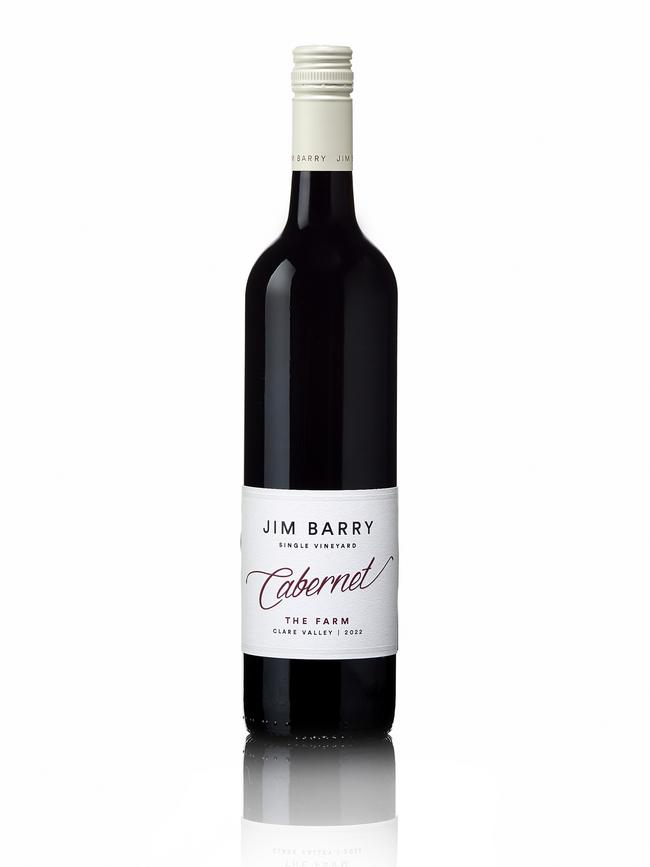
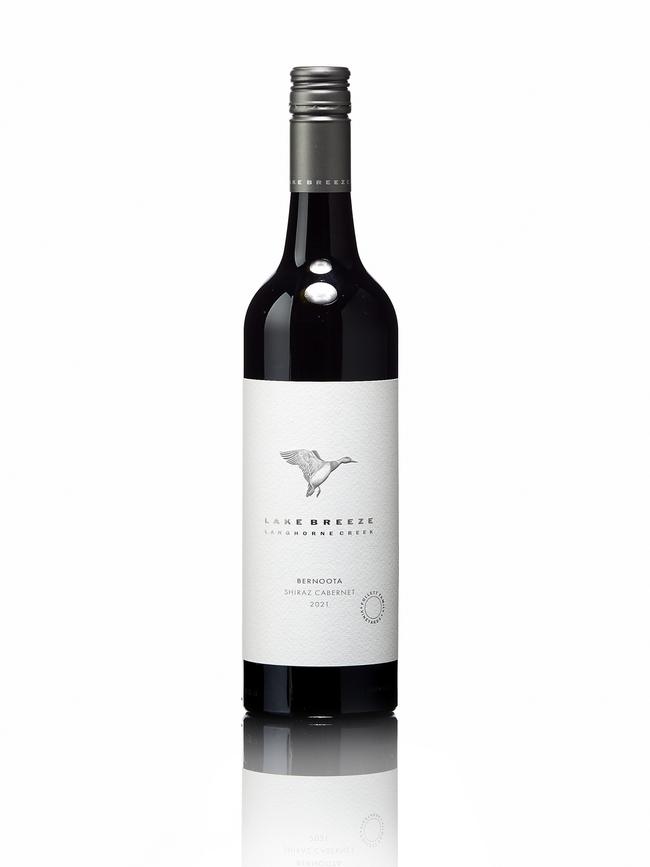
2022 Jim Barry ‘The Farm’ Cabernet Sauvignon
It’s hard to think of another winery on the kind of roll this Clare Valley powerhouse is on right now. Everything it touchesis turning to wine show gold. This neatly structured, precise and polished cabernet, with its alluring swirl of cassis, cedarand mint, is a powerful testament to the quality of Clare cabernet and the Barry team’s affinity with it. The price is almostlaughably low.
$35; 14.1% alcohol; 95 points
2021 Lake Breeze Bernoota Shiraz Cabernet
Nearly 30 years ago, a young bottleshop attendant was asked what he thought was the best value red in Australia. Now, as heposes that question in the national broadsheet, that bottleshop boy realises the answer hasn’t changed. Bernoota fans shouldchip in some of the money they’ve saved over the years to build a statue in its honour. The very definition of bang for buck.
$22; 14.5% alcohol; 94 points
Two bottles of each wine above for $26 a bottle. SAVE $100.
Order online or phone 1300 765 359 Monday to Friday, 9am to 5pm AEST. Deals are available only while stocks last. The Australian Wine Club is a commercial partnership with Laithwaites Wine, LIQP770016550




To join the conversation, please log in. Don't have an account? Register
Join the conversation, you are commenting as Logout